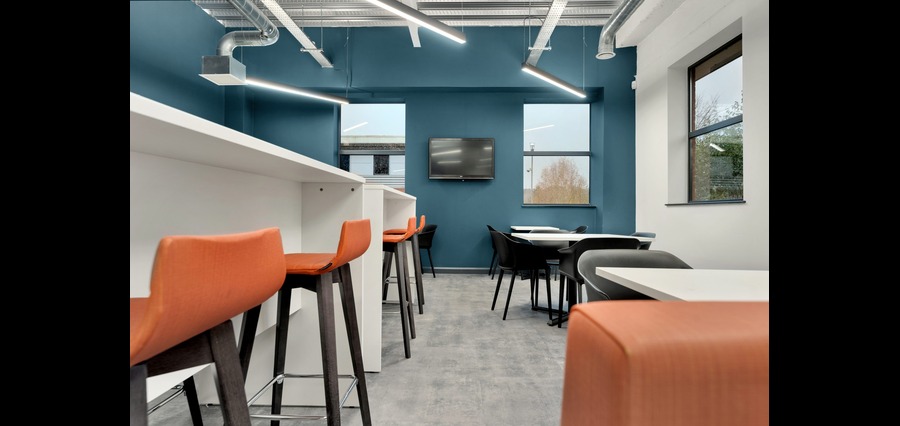With the evolving demands of the workplace, investing in a strategic fit-out can enhance productivity, foster a positive work culture, and ultimately contribute to business success. Navigating the complexities of office refurbishment presents a unique set of challenges and opportunities for business leaders in 2024.
This guide provides an essential overview of office refurbishment costs, highlighting key considerations and practical tips to empower decision-makers. As we delve into the intricacies of planning and executing a successful office transformation, we’ll explore the variables that impact budgeting and how to maximise value without compromising quality.
Understanding the Basics of Office Refurbishment Costs
The journey towards revamping your workspace begins with a clear understanding of what office refurbishment entails and the factors that influence its cost. Office refurbishment can range from minor aesthetic updates to comprehensive overhauls, including structural modifications, technology upgrades, and furniture replacement.
The scope of your project significantly affects the budget, with costs varying widely based on size, design complexity, and material quality. A critical first step is to define your objectives, assess your space’s current condition, and consider how the refurbishment will align with your company’s future needs and goals.
Planning Your Budget with Precision
Effective budget planning is crucial for a successful office refurbishment. It requires a detailed analysis of all potential expenses, from architectural services and contractor fees to furniture and technology investments. Transparent communication with your design and construction team can help identify cost-saving opportunities without sacrificing the project’s integrity.
Consider setting aside a contingency fund, typically 10-20% of the total budget, to address unforeseen challenges that may arise during the refurbishment process. This proactive approach ensures financial readiness, enabling a smoother project flow and reducing the risk of significant overruns.
The Role of Professional Guidance
Seeking professional advice is invaluable in navigating the complexities of office refurbishment. Experts in office design and fit-out can offer insights into the latest trends, innovative solutions, and cost-effective strategies. Collaborating with a seasoned team ensures that every aspect of your refurbishment project is meticulously planned and executed, aligning with your vision and budgetary constraints.
For those interested in understanding the specifics of office fit-out costs, there are plenty of online resources that provide a comprehensive resource that breaks down the expenses involved, offering clarity and direction for businesses embarking on this transformative journey, including a cost calculator in some cases!
Maximising Value without Compromising Quality
Achieving a balance between cost and quality is paramount in office refurbishment. Prioritising investments in areas that yield the highest return, such as ergonomic furniture and energy-efficient lighting, can enhance employee well-being and productivity, contributing to long-term savings.
Exploring sustainable materials and technology not only supports environmental initiatives but can also reduce operational costs. Additionally, considering flexible design principles allows for future adaptability, ensuring your space can evolve with your business needs without necessitating a complete overhaul.
Leveraging Technology for Cost Efficiency
In 2024, technology plays a pivotal role in optimising office refurbishment projects for cost efficiency and operational excellence. Smart building technologies, for example, offer significant advantages in managing energy consumption, enhancing security, and improving the overall workplace environment.
Investing in intelligent HVAC systems, automated lighting, and energy management solutions can lead to substantial long-term savings on utility bills. Additionally, incorporating flexible workspaces equipped with state-of-the-art communication tools can reduce the need for large physical office spaces, allowing businesses to adopt a more cost-effective, hybrid work model.
The Impact of Sustainable Practices on Refurbishment Costs
Adopting green building practices can have a profound impact on both the environment and your bottom line. Sustainable materials, while sometimes more expensive upfront, offer durability and efficiency that translate into cost savings over time.
Implementing green initiatives, such as waste reduction programs during construction and the use of recycled or eco-friendly materials, can also qualify businesses for tax incentives and improve their corporate image. Moreover, creating a healthier workplace through better air quality and natural lighting can boost employee productivity and satisfaction, further justifying the initial investment.
Navigating the Regulatory Landscape
Understanding and adhering to the regulatory landscape is essential for any office refurbishment project. In 2024, building codes and workplace regulations continue to evolve, reflecting increased emphasis on safety, accessibility, and sustainability. Early consultation with regulatory bodies and compliance experts can prevent costly delays and modifications.
Ensuring your project meets all legal requirements not only protects you from potential fines but also enhances the safety and well-being of your employees. Furthermore, compliance with high standards of sustainability and accessibility can set your business apart, attracting top talent and conscientious clients.
Creating a Future-Proof Workplace
The ultimate goal of an office refurbishment is to create a workspace that not only meets current needs but is also adaptable to future changes. This involves considering how technological advancements, evolving work practices, and potential business growth could impact your office environment.
Designing for flexibility—through modular furniture, reconfigurable spaces, and infrastructure that can support emerging technologies—ensures that your office remains functional and efficient in the years to come. Investing in a future-proof workplace is a strategic move that can prevent the need for frequent, costly refurbishments, thereby saving your business money in the long run.


